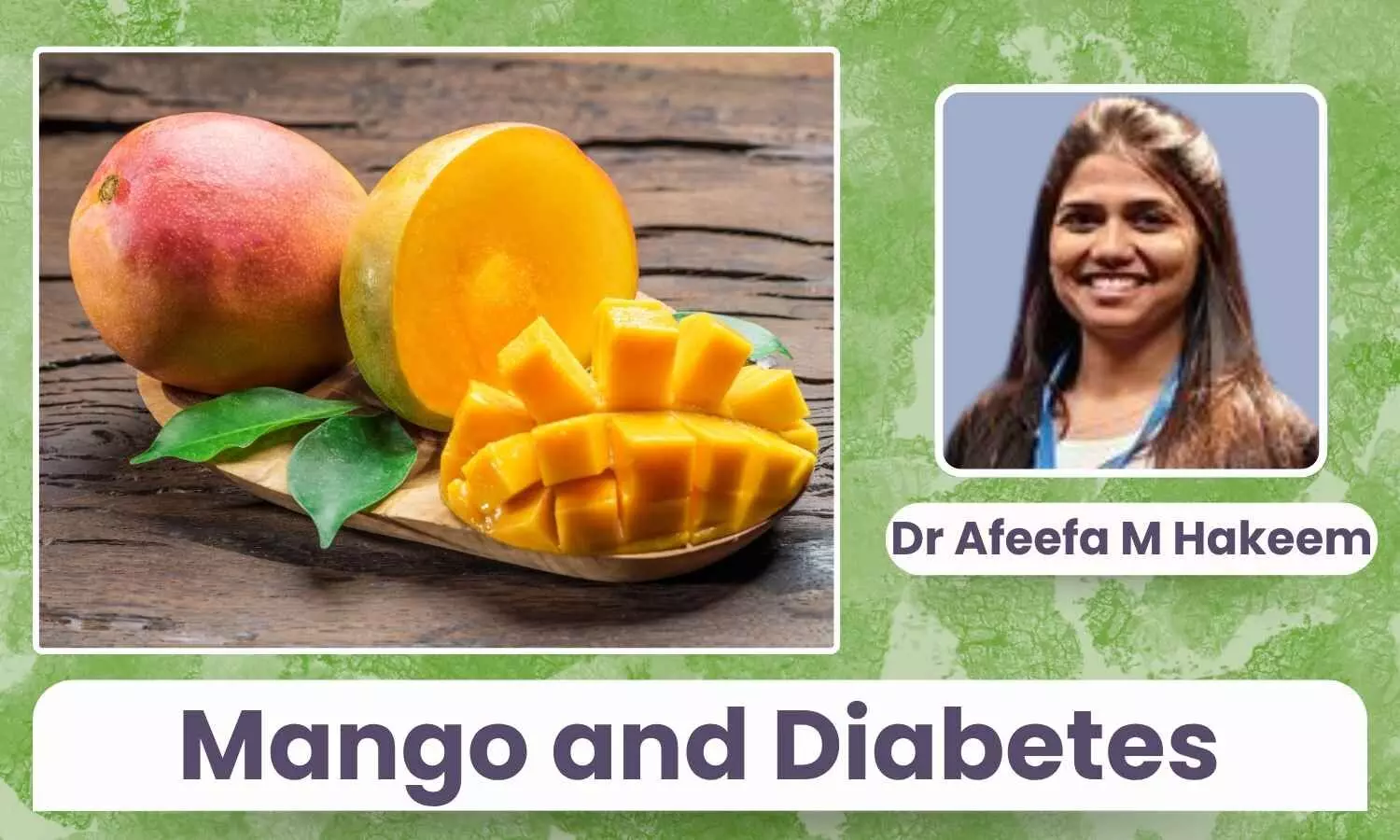Mango & Diabetes: Sweet Temptation or Smart Nutrition? - Dr Afeefa M Hakeem

Every summer, when mangoes start piling up in the house, my dad, who has diabetes, happily indulges in them like there’s no diagnosis to worry about.
He’s never too strict about his diet, but mangoes are in a league of their own for him. Watching him sneak in slices got me thinking: Are mangoes actually bad for diabetics, or are we just scared of the word "sugar"? As a doctor and a daughter, I decided to dig into the science, and here’s what I found.
Mango, the golden, juicy fruit that marks the peak of summer, is adored by millions. But when you’re living with diabetes, that love often turns into fear.
"Isn’t mango just pure sugar?" "Won’t it spike my blood sugar?" "Do I have to give it up completely?"
Here’s the honest, research-backed answer: Mangoes can be part of a diabetic-friendly diet, if consumed wisely. Let’s explore why, based on real science, not myths.
The Science Behind Mango and Blood Sugar
Are the Natural Sugars in Mango Harmful?
Mango contains natural sugars, primarily fructose, glucose, and sucrose, but these occur with fibre, polyphenols, antioxidants, vitamins, and water, which alter how the body processes them.
Unlike refined sugar (which causes a blood glucose spike), the fibre and phytonutrients in mango slow down digestion and modulate the glycemic response.
Clinical Studies and Research Findings
1. Mango Improves Insulin Sensitivity
A systematic review (2023) analysing both animal and human studies found that mango contains bioactive compound, especially mangiferin, that improve insulin sensitivity, reduce oxidative stress, and help manage blood glucose.1
2. Mango Has a Low-to-Moderate Glycemic Index
The Glycemic Index (GI) of mango is around 51–56, which classifies it as a low-to-moderate GI fruit. Low GI foods lead to a slower, steadier rise in blood glucose, essential for people with diabetes.2,3,4
3. Postprandial Glucose Response: Mango vs Bread
A randomized clinical trial (2023) compared the post-meal glucose spike in adults who ate fresh mango, dried mango, or white bread. Those who ate fresh mango had the lowest postprandial glucose rise, thanks to its fibre and water content.5
Why Mango can be Helpful in Moderation
It’s Not Just Sugar, It’s Nutritional Power
One cup of sliced mango (about 150g) provides:
- 3g fiber
- 100% RDI of Vitamin C
- Vitamin A, E, and folate
- Bioactive antioxidants: mangiferin, quercetin, gallic acid
- Natural prebiotics for gut health
These nutrients support immune function, inflammation control, and even cardiovascular health, all crucial for people with diabetes.
How to Include Mango Safely in a Diabetic Diet?
Portion & Pairing Are the Keys
- Portion Control: Stick to ½ cup (50–75g) of fresh mango at a time. This contains approx. 12–15g of natural sugar, but with fibre.
- Avoid Mango Juice: Juices remove fibre and lead to rapid sugar spikes.
- Combine Smartly:
- Pair with a source of protein (like Greek yogurt or nuts).
- Eat as a dessert after a balanced meal, not on an empty stomach.
- Avoid combining with other high-carb fruits.
- Check Your Numbers: Use a glucometer to see how your body responds post-mango. Everyone's tolerance is different.
Understanding Mango's Anti-Diabetic Potential
Mangiferin: The Star Compound
Mangiferin, a polyphenol found in mango (especially in the peel and seed), has been shown to:
- Inhibit enzymes involved in carbohydrate digestion
- Reduce blood sugar and HbA1c in animal models
- Decrease inflammation and oxidative stress
- Protect pancreatic β-cells
While most of it is concentrated in parts not usually eaten, small amounts still exist in the fruit flesh, contributing to its health benefits.
Mango VS Other Fruits: A Comparison for Diabetics
| Fruit | GI Value | Sugar (per 100g) | Fibre (per 100g) |
| Mango | 51 | 14g | 1.6g |
| Banana | 52 | 12g | 2.6g |
| Grapes | 59 | 16g | 0.9g |
| Watermelon | 72 | 6g | 0.4g |
| Apple | 36 | 10g | 2.4g |
Mango ranks well among common fruits, not the lowest in sugar, but certainly not the highest either.6
The Take-Home Message
Mango isn't your enemy, mindless eating is.
What to Remember:
- Mango is not off-limits for people with diabetes.
- Eat it in small, controlled portions.
- Avoid juice and dried mango.
- Pair it with protein or fat to blunt glucose spikes.
- Use it as part of a balanced, whole-food diet.
"Diabetes doesn’t mean you have to live a tasteless life. You just have to live a more mindful one."
So this summer, enjoy your mango with respect, not fear. Science says: you can have your fruit and eat it too.
References
- Alasvand Zarasvand S, Mullins AP, Arjmandi B, Haley-Zitlin V. Antidiabetic properties of mango in animal models and humans: A systematic review. Nutr Res. 2023;111:73-89. doi:10.1016/j.nutres.2023.01.003.
- Healthline. Is Mango Good for Diabetes? Published Jan 2020.
- Medical News Today. Mango Glycemic Index and Diabetes. Jan 15, 2018.
- American Diabetes Association. Fruits and Diabetes: What’s Safe to Eat?
- Gonzalez JL, et al. Postprandial Glycemic Response to Fresh Mango Compared to Dried Mango and White Bread. Nutrients. 2023; PMC10374964.
- USDA Food Database. Mango, raw, nutritional content per 100g.


